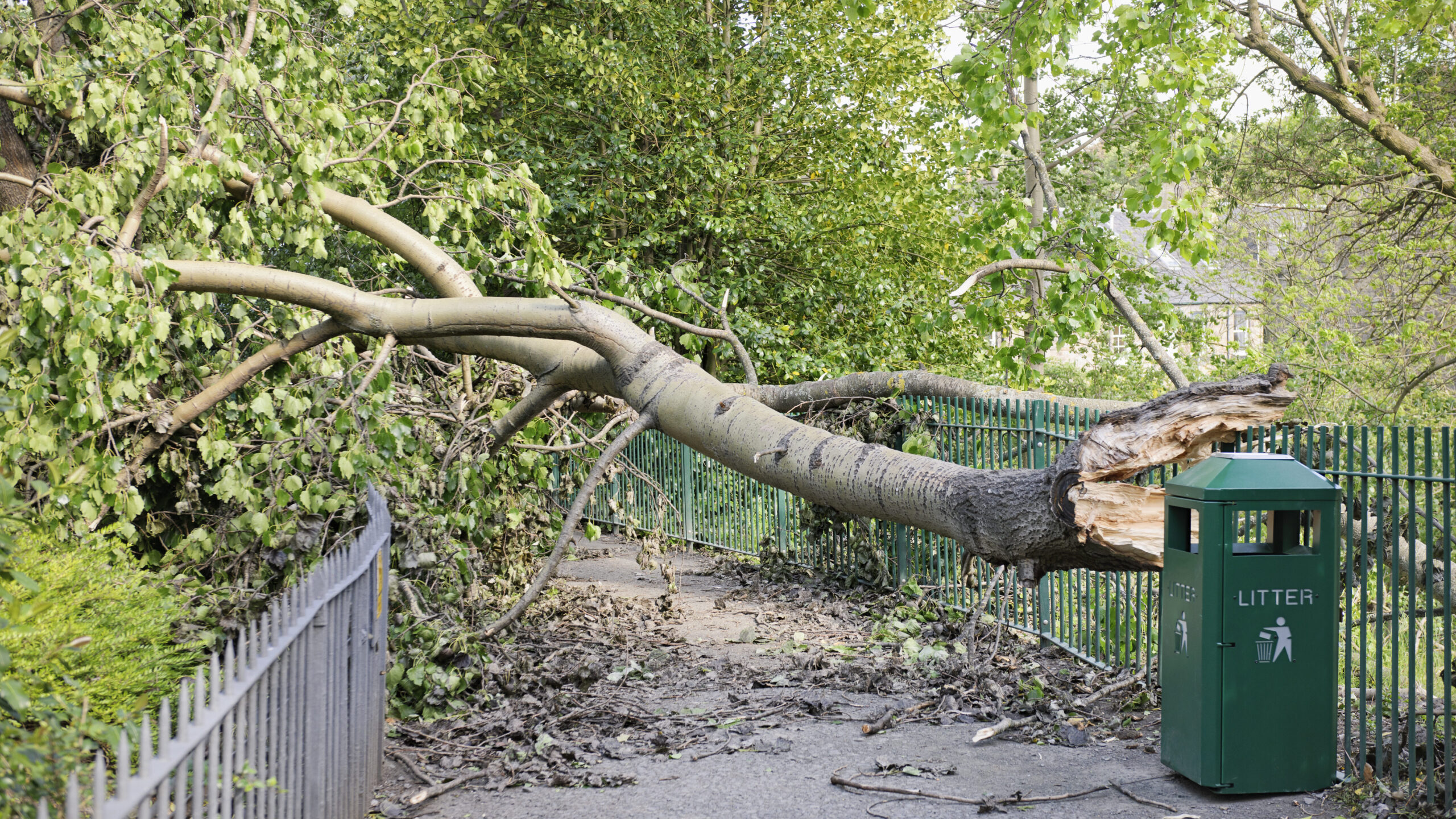Storms

Storms can lead to disruption to power, internet and phone networks, fallen trees and flooded infrastructure. Storms can also cause issues with travel (including planes, cars and trains). You should pay extra attention to advice and warnings when a storm is named by the Met Office (for example, Storm Arwen), as these storms are more likely to bring the biggest impacts.
Strong winds can cause large waves that flood the coast, and can drive storm surges, where seawater is pushed towards the coast. Storm surges can also be caused by low atmospheric pressure causing sea level to rise.
Sometimes storms can lead to severe inland flooding from rain, or along coasts from storm surges overtopping flood defences. Read more advice on preparing for flooding.
Actions to take to prepare storms or if one is forecast
- Check the weather forecasts, or download the Met Office Weather Forecast app where you can create alerts for your area. Pay particular attention to any National Severe Weather Warnings covering your area, and act on any advice issued.
- Make sure you know who your power provider is and how to contact them if you have a power outage. Read advice on preparing for power cuts.
- Charge mobile phones, power banks and any back-up batteries for medical equipment in case there is a power cut.
- Limit travel as much as you can. If you need to make a journey, allow extra time and check for the latest advice from your travel operator ahead of time, and adhere to ‘Do Not Travel’ notices.
- Check on those in your community who might need extra help and offer practical support (e.g. help obtaining food or medication) if possible.
- Secure loose objects such as ladders, trampolines, garden furniture, toys or play equipment, or anything else that could be blown around in high winds.
- Close and securely fasten doors and windows, particularly those the side of the building facing the wind, and large doors such as those on garages. Loft trap doors should be closed and secured with bolts, particularly if your roof pitch is less than 30°. If the house is fitted with storm shutters over the windows then ensure that these are closed and fastened.
- Park vehicles in a garage, if available – otherwise keep them clear of buildings, trees, walls and fences.
- If your chimney stacks are tall and in poor condition, move any beds away from areas directly below them.
- Check if schools and colleges are planning to close, and make alternative childcare arrangements if necessary.
Actions to take during a storm
- Try not to go outside unless absolutely necessary. If you do go outside, try not to walk or shelter close to buildings, fences, boundary walls and trees. If possible, enter and leave your house through doors on the sheltered side, closing them behind you.
- Do not go outside to repair damage to your property while the storm is in progress.
- Open internal doors only as needed, and close them behind you.
- If you need to drive, take care on exposed routes such as bridges, or high open roads, delay your journey or find alternative routes if possible. Slow down and be aware of side winds, particularly if you are towing or are a high sided vehicle.
- If you see power lines that have been brought down or damaged, keep as far away as possible. Electricity at high voltages can jump gaps with no warning.
- Storms can cause water outages by fallen trees or flooding damaging the water network. Check what to do in a water supply interruption or outage.
After a Storm
- Be careful not to touch any electrical or telephone cables that have been blown down or are still hanging.
- Do not walk too close to walls, buildings and trees as they could have been weakened.
- Make sure that any vulnerable neighbours or relatives are safe and help them make arrangements for any repairs.
Further information and resources
Read the latest information about named storms in the UK from the Met Office UK Storm Centre.